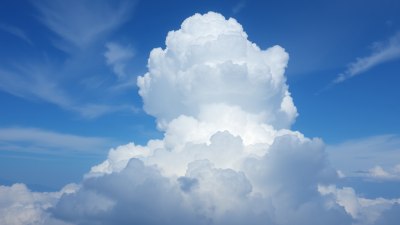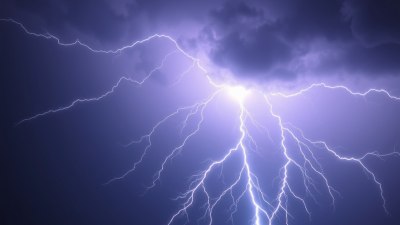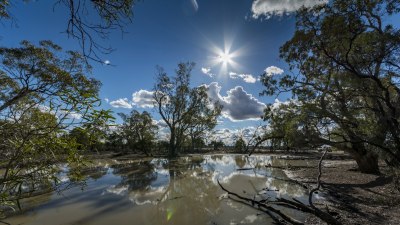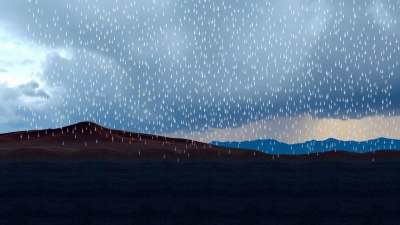Why Sometimes It Rains Mud When Dust Travels for Thousands of Miles
Explore the phenomenon of mud rain, its causes, and implications on the environment.

Rain is generally seen as a symbol of renewal and life, but sometimes it can bring unexpected elements, like mud. The occurrence of mud rain is a fascinating meteorological phenomenon that raises many questions. How does dust, lifted from distant locations, travel thousands of miles to affect the rain in other regions? This article dives deep into the intricacies behind this phenomenon and why it happens.
Understanding the Basics of Mud Rain
Mud rain, also called dirty rain or mud showers, occurs when raindrops capture and carry tiny particles of dirt, dust, or pollutants as they make their descent through the atmosphere. When these particles are sufficiently heavy, they do not simply dissolve; instead, they become suspended in the water droplets. Upon reaching the ground, the rain leaves behind residues that resemble mud.
How Dust Travels Thousands of Miles
One key element that contributes to mud rain is the ability of dust storms to transport particles over vast distances. Meteorological studies reveal that dust can be carried by wind currents from arid regions and deserts. For instance, dust from the Sahara Desert can travel across the Atlantic Ocean to reach the Americas, traveling thousands of miles in the process. Wind patterns significantly influence these dust storms, often causing particles to rise high into the atmosphere, where they can be carried long distances before settling back down with rain.
The Role of Weather Systems
Weather systems play a vital role in whether or not mud rain occurs. When disturbed weather conditions arise, cold fronts can introduce ascending air that helps lift dust particles into the atmosphere. As rain begins to fall, particularly in storms, the droplets can collect these airborne particles. When the conditions are just right, this leads to a muddy rainfall event, often noticeable as an unusual brownish tinge in the water.
Common Places Affected by Mud Rain
Regions more prone to mud rain are often located downwind of major deserts and arid areas. For example, cities along the Mediterranean and Atlantic coasts may experience this phenomenon as Saharan dust travels thousands of kilometers. Similarly, parts of the southwestern United States can also experience mud rain, particularly during the dry season when dust storms are more common.
Impacts of Mud Rain
The implications of mud rain extend beyond the temporary inconvenience of dirty surfaces. Significant environmental impacts might occur, from air quality degradation to soil composition changes. For instance, when mud rains fall, they can carry nutrients and minerals that can enhance soil fertility. This can sometimes benefit agriculture, particularly in areas that rely heavily on predictable rain patterns.
However, mud rains can also have detrimental effects. Pollutants carried by dust can contaminate water supply systems, making it unsafe for consumption. The fine particles in the rain can cause respiratory problems for individuals, particularly those with pre-existing health conditions. Understanding these impacts is crucial for developing strategies to mitigate the negative effects of mud rain.
The Science of Raindrop Formation
The formation of raindrops leads us to the next question: how do water droplets form large enough to collect such particles during their descent? When moist air rises, it cools and condenses around small particles like dust or pollen, creating water droplets. As these droplets grow in size, they attract more moisture and become heavy enough to fall as rain. If these droplets accumulate enough dust or dirt while falling, it results in the muddy rain phenomenon.
Climate Change and Mud Rain
With climate change becoming an increasingly pressing issue, scientists are studying how alterations in weather patterns might affect the frequency and intensity of mud rain events. Changes in temperature and precipitation patterns could lead to increased dust storms, thus raising the likelihood of mud rain occurrences in several regions. Moreover, as the atmosphere warms, it can hold more moisture, which might intensify rainfall while simultaneously keeping dust aloft longer.
Mitigating the Effects of Mud Rain
Although mud rain is a natural phenomenon, communities can take steps to mitigate its effects. Monitoring weather patterns and dust events can help in predictions of when and where mud rain might occur. For those in agriculture, preparation techniques such as implementing barriers to wind erosion or timing planting schedules to coincide with expected rain can help manage the impact of mud rain. In urban settings, cleaning methods following significant mud rain events can prevent long-term damage to structures and infrastructure.
The Intersection of Culture and Mud Rain
Throughout history, various cultures have attached meanings to rain, including mud rain. For some, it is a sign of bad luck or a portent. In others, it might be seen as a cleansing event that fortifies the soil in preparation for crops. This human aspect contributes a rich layer of understanding and appreciation for mud rain beyond its scientific explanation. It shows how intertwined nature and culture can be, influencing perceptions and behaviors.
The Significance of Mud Rain
Mud rain, while often viewed negatively, serves as an intriguing ecological event that highlights the complexities of our planet's weather systems. Understanding the science behind this phenomenon enriches our perspective on interconnectedness in nature. It also emphasizes the importance of being prepared for the unique challenges and benefits that mud rain may bring to different regions around the world.











